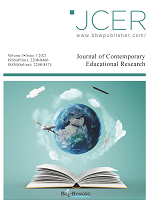Abstract
Cave 254 of the Mogao Grottoes is one of the most representative grottoes from the Northern Wei Dynasty. The painting of “Laying Down Oneself to Feed the Tiger” on the south wall of the grotto has high artistic value. With changing dynasties and the development of time, the original appearance of the painting has changed. In particular, the color of the whole cave has undergone a subversive change, resulting in many misunderstandings. In this article, the composition, colors, and lines of the painting, “Laying Down Oneself to Feed the Tiger,” are discussed in view of the current situation of the cave, and the work is approached from the perspective of painting. The concept of different times of the same painting, its precise and unique layout, as well as development peak of “Laying Down Oneself to Feed the Tiger” are expounded. In this article, the unique artistic level of this mural in the Northern Dynasty is demonstrated along with its importance for present paintings.
References
Hegel, 1979, Aesthetics [Zhu G, Trans.], Commercial Press, Beijing, 281.
Kandinsky W, 1911, On Spirit in Art [Yu M, Trans.], Chongqing University Press, Chongqing, 70.
Yan W, 1978, Color, Shanghai People’s Fine Arts Publishing House, Shanghai, 7.
Duan W, 2007, Art Studies in Mogao Caves, People’s Publishing House, Lanzhou, 297.
Zhang Y, 2004, Fan Hsiang Yong Point School. Scroll One of the Famous Paintings of the Past Six, People’s Fine Arts Publishing House, Beijing, 13-14.
Pang X, 1982, Research on Chinese Ancient Decorative Painting, Shanghai People’s Fine Arts Publishing House, Shanghai, 38.
